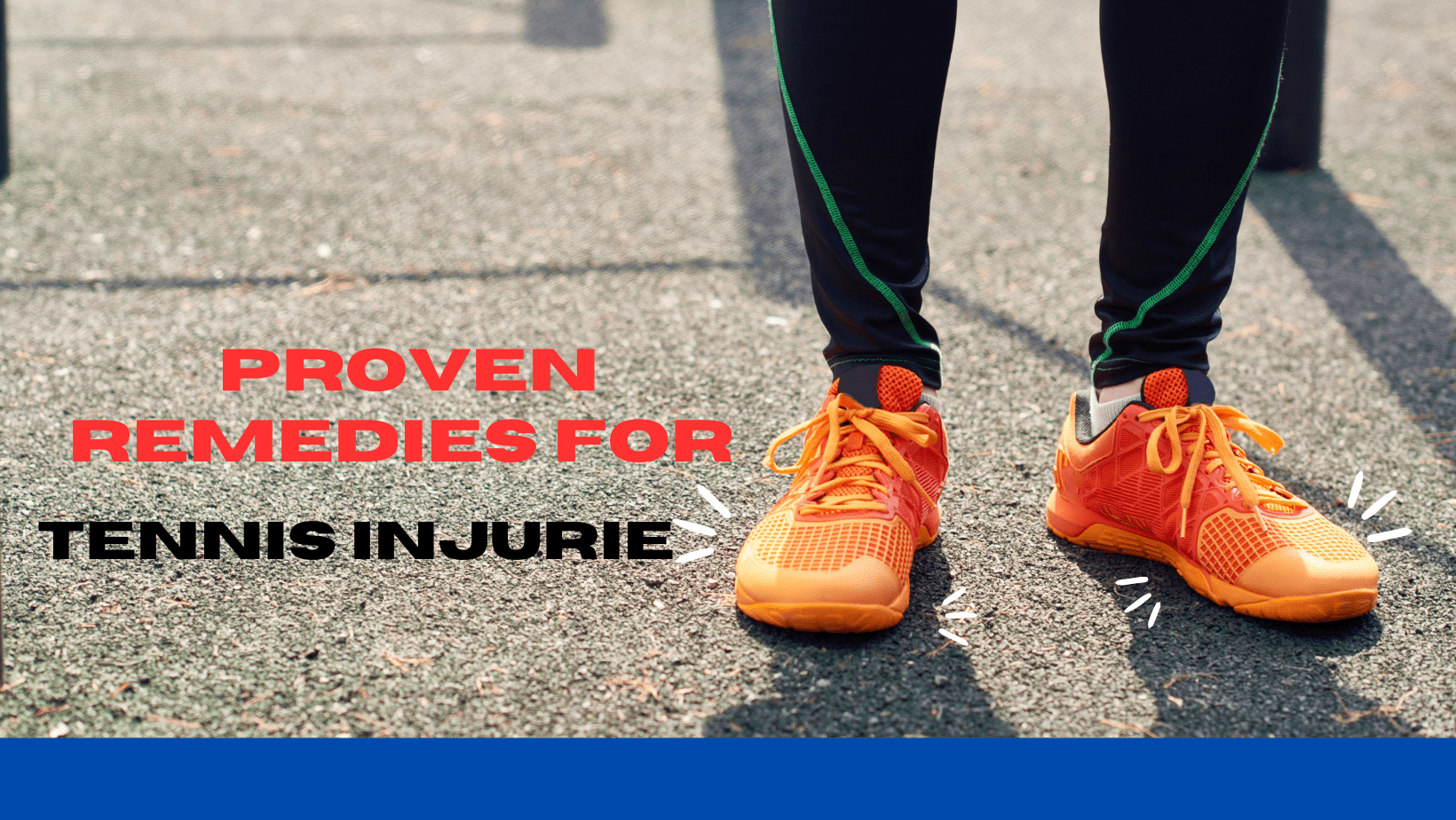Deuce the Pain: Proven Remedies for Tennis Injurie
Tennis injuries can be painful and frustrating, but there are several proven remedies and strategies to help prevent and treat them. It's important to note that if you have a serious injury, you should consult a healthcare professional for proper diagnosis and treatment. Here are some common tennis injuries and their remedies:
|
Injury Type |
Prevalence (%) |
Common Treatments |
Average Recovery Time |
Symptoms |
|
Tennis Elbow |
10-50% |
Rest, PT, Ice, Bracing, NSAIDs |
6-12 weeks |
Pain and tenderness on the outside of the elbow, especially when gripping or lifting objects. |
|
Rotator Cuff Injuries |
5-20% |
Rest, PT, Heat/Ice, Bracing |
Varies (weeks-months) |
Pain and stiffness in the shoulder, especially when serving or hitting overhead shots. |
|
Sprained Ankle |
15-30% |
Rest, Elevation, Ice, Bracing |
2-6 weeks |
Pain, swelling, bruising, and difficulty moving the ankle. |
|
Knee Injuries |
10-25% |
Rest, PT, Bracing, NSAIDs |
Varies (weeks-months) |
Pain in the front of the knee (patellar tendinitis) or on the inside of the knee (meniscus tear). |
|
Muscle Strains/Tears |
20-30% |
Rest, PT, Ice, Compression |
2-8 weeks |
Pain, swelling, and muscle weakness. |
|
Achilles Tendonitis |
5-10% |
Rest, PT, Orthotics, Heel Lifts |
Varies (weeks-months) |
Pain and tenderness in the calf or Achilles tendon, especially when pushing off or running. |
- Tennis Elbow (Lateral Epicondylitis):
- Rest: Give your elbow time to heal by avoiding activities that worsen the pain.
- Ice: Apply ice to the affected area for 15-20 minutes several times a day to reduce inflammation.
- Compression: Consider using an elbow brace or strap to provide support.
- Physical therapy: Strengthening and stretching exercises can help improve flexibility and reduce strain.
- Anti-inflammatory medications: Nonsteroidal anti-inflammatory drugs (NSAIDs) can help alleviate pain and inflammation.
- Rotator Cuff Injuries:
- Rest and immobilization: Avoid activities that aggravate the injury, and use a sling or brace if necessary.
- Physical therapy: Specific exercises can help strengthen the shoulder and improve range of motion.
- Heat and ice: Alternating between heat and ice can help reduce pain and inflammation.
- Sprained Ankle:
- Rest and elevation: Keep the affected ankle elevated to reduce swelling.
- Ice: Apply ice to the injured area for 15-20 minutes every few hours.
- Compression: Use a bandage or brace to support the ankle.
- Gentle exercises: Gradually introduce range of motion and strengthening exercises once pain subsides.
- Knee Injuries (e.g., Patellar Tendonitis):
- Rest: Give your knee time to heal by avoiding activities that strain it.
- Physical therapy: Exercises to strengthen the muscles around the knee can help support it.
- Knee brace: A brace can provide stability and reduce strain.
- Anti-inflammatory medications: NSAIDs can help reduce pain and inflammation.
- Muscle Strains and Tears:
- Rest: Avoid using the injured muscle to allow it to heal.
- Ice: Apply ice for 15-20 minutes every few hours during the initial 48 hours.
- Compression: Use a bandage or wrap to reduce swelling.
- Physical therapy: Gradual stretching and strengthening exercises are crucial for recovery.
- Achilles Tendonitis:
- Rest: Avoid activities that strain the Achilles tendon.
- Stretching and strengthening exercises: Focus on the calf muscles and Achilles to prevent recurrence.
- Orthotics: Custom-made or over-the-counter inserts can provide support.
- Heel lifts: Elevating the heel can reduce tension on the tendon.
Tips for preventing tennis injuries
- Warm up properly before playing. This should include dynamic stretches, such as arm circles and leg swings.
- Use proper technique. This is especially important for the serve and groundstrokes.
- Wear supportive shoes and orthotics.
- Take breaks during long matches.
- Listen to your body and stop playing if you experience any pain or discomfort.
If you are injured
- Stop playing immediately.
- Apply ice to the injured area for 20 minutes at a time, several times a day.
- Compress the injured area with an elastic bandage.
- Elevate the injured area above the level of the heart.
- See a doctor or physical therapist to get a diagnosis and treatment plan.
Tennis players with their injuries:
|
Player |
Injury Type |
Year of Injury |
Recovery Process |
|
Rafael Nadal |
Knee Injuries |
2012, 2016 |
Physical therapy, rest, rehabilitation |
|
Roger Federer |
Knee Surgery |
2020 |
Knee surgery, rehabilitation, strength training |
|
Serena Williams |
Various Injuries |
Throughout career |
Rest, physical therapy, medical team collaboration |
|
Andy Murray |
Hip Injury |
2019 |
Hip resurfacing surgery, rehabilitation, adapted playing style |
|
Novak Djokovic |
Elbow Injury |
2017-2018 |
Rest, rehabilitation, serve technique adjustment |
Note:
It's essential to consult with a healthcare professional or physical therapist for a personalized treatment plan tailored to your specific injury. Additionally, follow their guidance on when it's safe to return to playing tennis or engaging in physical activity.

